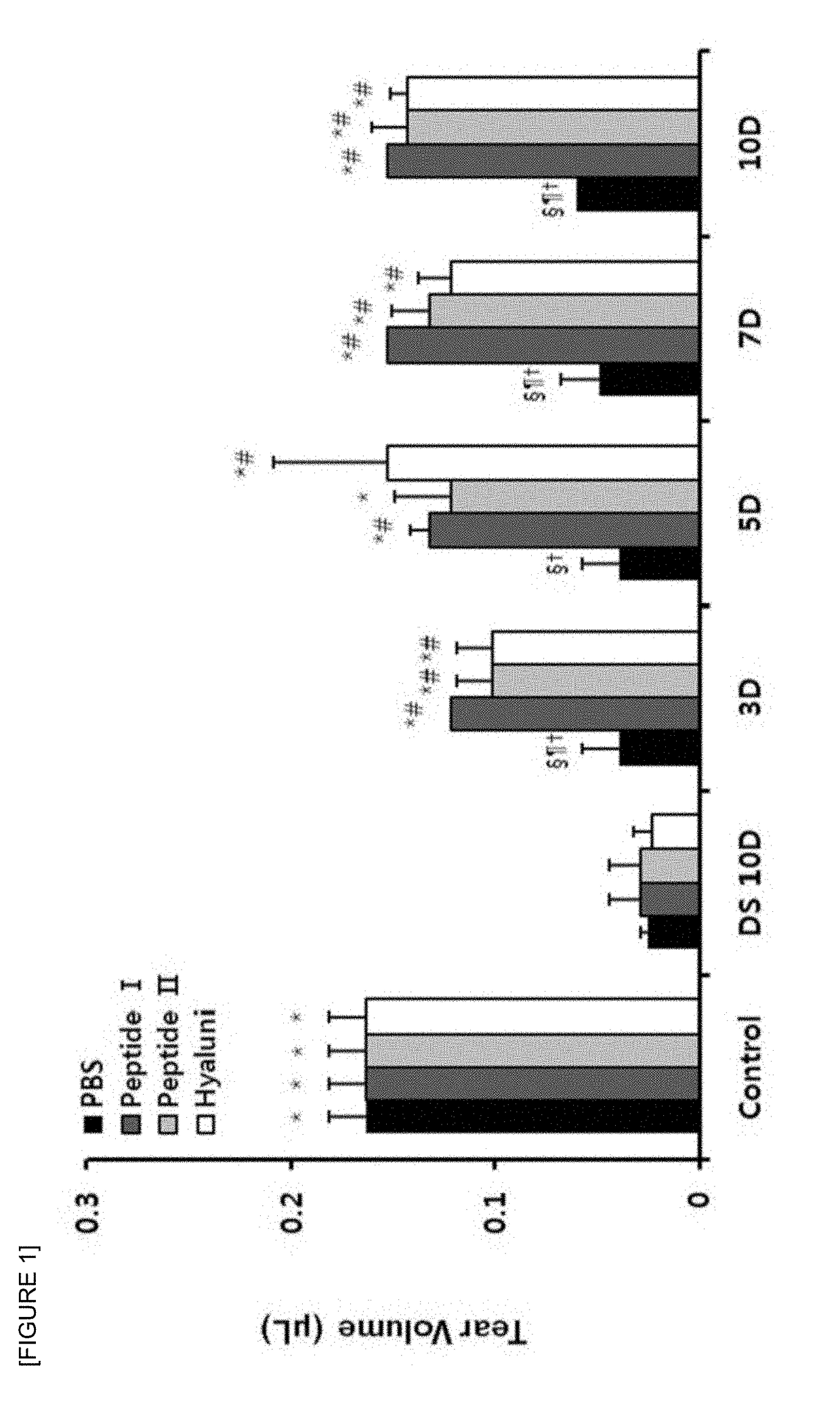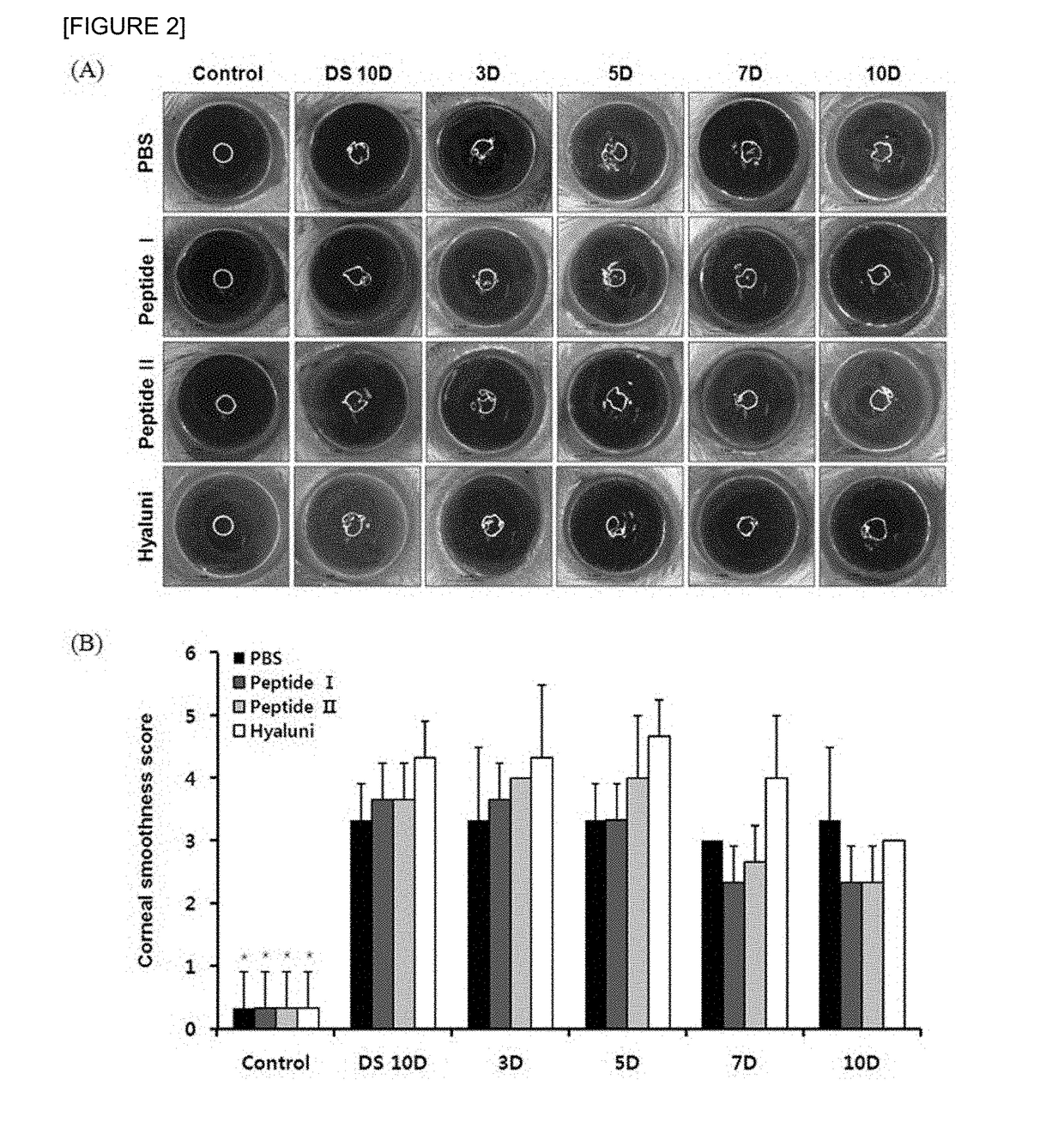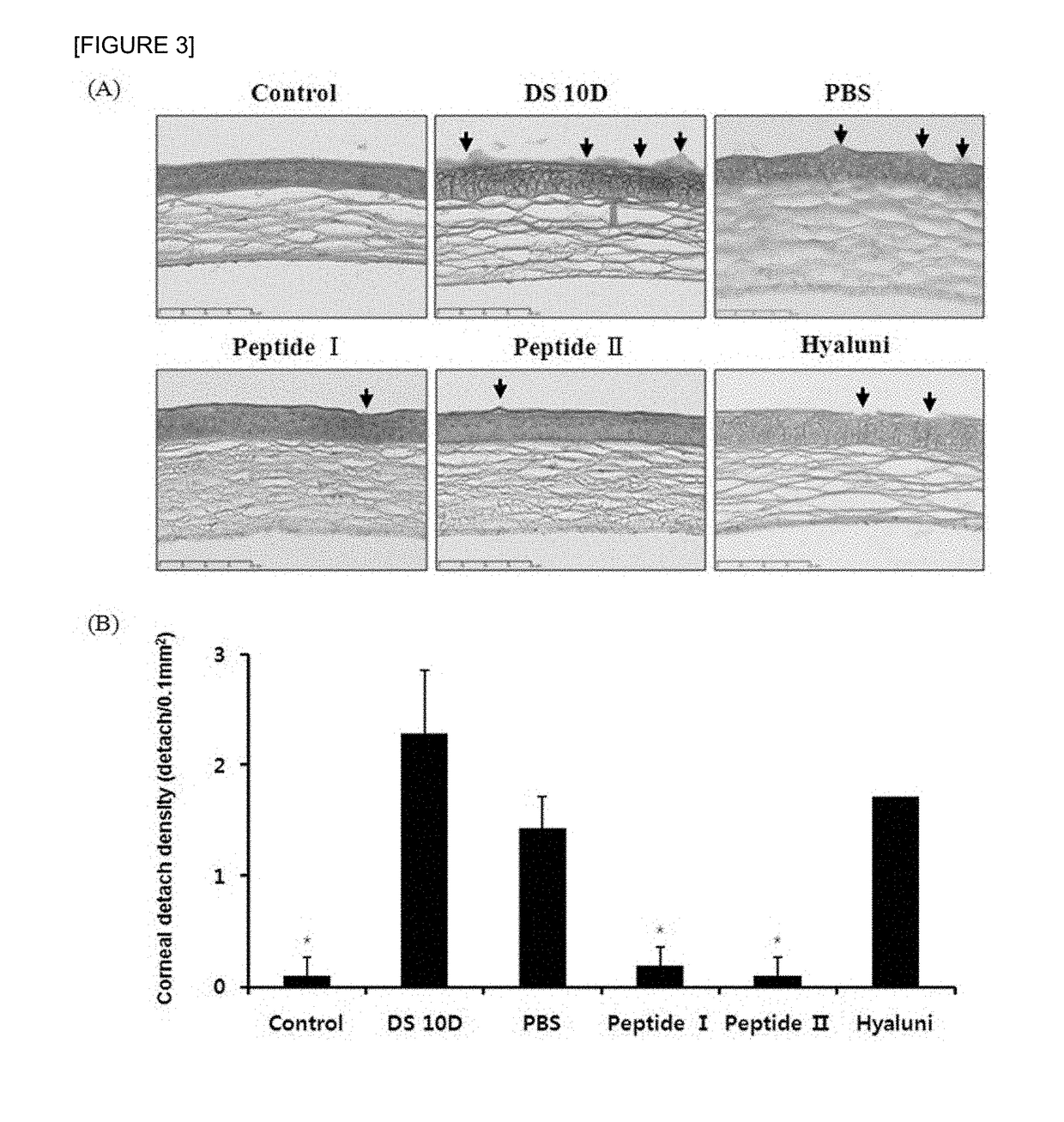Pharmaceutical composition for preventing or treating dry eyes
a technology of pharmaceutical compositions and eye drops, applied in drug compositions, animal/human proteins, peptide/protein ingredients, etc., can solve the problems of affecting life quality, reducing functional vision, and damage to the ocular surface, so as to reduce the number of conjunctival goblet cells, improve tear production and corneal surface smoothness, and suppress the detachment of corneal epithelial cells.
- Summary
- Abstract
- Description
- Claims
- Application Information
AI Technical Summary
Benefits of technology
Problems solved by technology
Method used
Image
Examples
experimental example 1
Synthesis of Peptides
[0028]Peptides used in all experiments were collagen type I α1 based peptide GDRGD (hereinafter, referred to as ‘peptide I’, SEQ ID NO: 1) and collagen type II α1 based peptide GQDGLAGPK (hereinafter, referred to as ‘peptide II’, SEQ ID NO: 2), which were synthesized from PEPTRon (Daejeon, Korea).
experimental example 2
Experimental Animals and Preparation of Dry Eye Animal Models
[0029]NOD.B10.H2b mice were purchased from Jackson Laboratory (Bar Harbor, Me., USA). Experiments on animals were performed according to the guidelines for animal experiments of Inje University College of Medicine (No.; 2014-029) and the ARVO statement for the use of animals in ophthalmic and vision research. 12-to-16-week-old NOD.B10.H2b mice underwent desiccation stress as being exposed to an air draft from a fan at an ambient humidity of about 40% to 50% for 18 hours per day, and then, were subjected to subcutaneous injection of 0.5 mg / 0.2 mL of muscarinic receptor blockers. Also, the mice were injected with scopolamine hydrobromide (Sigma-Aldrich, St. Louis, Mo.) alternatively on hindquarters 4 times per day (9 AM, 12 PM, 3 PM, and 6 PM) for 10 days. During these experiments, behaviors and food and water intakes of the mice were not restricted. 10 days later, the mice were euthanized.
[0030]10 days after the mice underw...
example 1
Effects of Peptides on Tear Production
[0031]Extents of tear production were measured with phenol red-impregnated cotton threads (Zone-Quick; Oasis, Glendora, Calif.), as previously described (Villareal A L, Farley W, Pflugfelder S C. Effect of topical ophthalmic epinastine and olopatadine on tear volume in mice. Eye Contact Lens. 2006;32(6):272-276). The threads were held medical tweezers and placed in the lateral canthus for 20 seconds. The tear volumes were expressed as millimeter (mm) of wet thread that had been turned red by the tears, as measured under a microscope (SZX7; Olympus corp, Tokyo, Japan).
[0032]The tear fluid uptakes measured in millimeters were compared to a standard curve that was prepared from cotton threads with known uptake volumes of a stock basic solution (1,500 mL of 0.9% saline and 5 mL of 5 N NaOH) over 20 seconds that were within the range that would be expected for mouse tears.
[0033]Consequently, as shown in FIG. 1, the desiccation stress significantly de...
PUM
| Property | Measurement | Unit |
|---|---|---|
| Percent by mass | aaaaa | aaaaa |
| Percent by mass | aaaaa | aaaaa |
| Weight | aaaaa | aaaaa |
Abstract
Description
Claims
Application Information
 Login to View More
Login to View More - R&D
- Intellectual Property
- Life Sciences
- Materials
- Tech Scout
- Unparalleled Data Quality
- Higher Quality Content
- 60% Fewer Hallucinations
Browse by: Latest US Patents, China's latest patents, Technical Efficacy Thesaurus, Application Domain, Technology Topic, Popular Technical Reports.
© 2025 PatSnap. All rights reserved.Legal|Privacy policy|Modern Slavery Act Transparency Statement|Sitemap|About US| Contact US: help@patsnap.com



